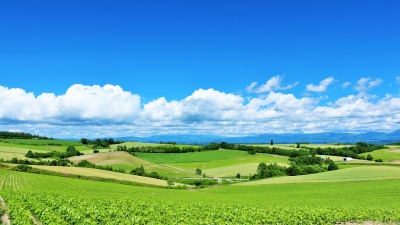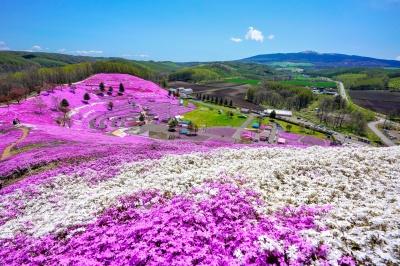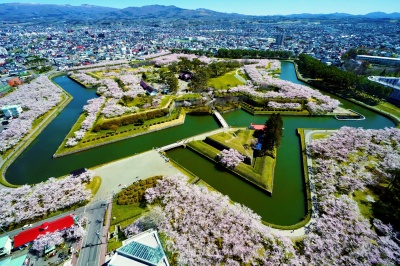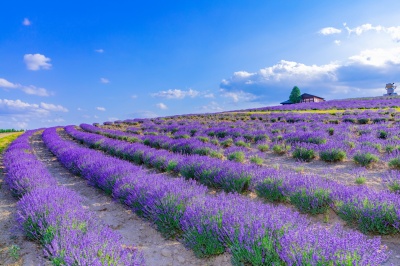One local’s mission to make Rishiri Island a backcountry hot spot

Rishiri Island, situated at Hokkaido’s northern peak and accessible by ferry directly from the region or by airplane from Sapporo’s Okadama Airport, features a truly unique geography. While boasting a circumference of only 60 kilometers (about a one hour drive all the way around), the majestic Mount Rishiri rises steeply at its center up to its peak at more than 1,700 meters tall. Naturally, this means that a climb up the mountain offers spectacular panoramic views of the sea in every direction and the island has always been a popular pilgrimage to avid mountaineers. However, this has also resulted in tourism to the remote island being heavily concentrated to the three summer months. Enter Toshiya Watanabe, a local that made it his mission to singlehandedly transform tourism to the island.
- * Please note that the text shown on this page includes machine translations.
Profile
Nature guide, pension management
Mr. Toshiya Watanabe
Born in Rishiri Island. Rishiri/Rebun nature guide. He conducts backcountry guided tours of Rishirifuji during the winter season.
The challenge for the tourism industry is uneven distribution of seasons
"I was born and raised on Rishiri and after working on the mainland for a while, I returned in 2003 to help with my family’s hotel business”, says Watanabe, who now runs Rishiri Maruzen Kanko, which has since evolved its business to also offer full-service nature tours, the only such tour operator headquartered on the island. Rishiri, which has a population of about 4,300 inhabitants and depends primarily on tourism and fishing, was always fairly popular with visitors, but Watanabe felt that they weren’t able to experience all that the island had to offer: “We basically had two types of tourists coming to the island: mountaineers looking to climb to the top of Mount Rishiri, or tour busses that only made a short trip around the island.” Especially outside of the peak summer season, tourism was basically non-existent. “I remember it well: we would be insanely busy for 3 months in summer, and then had practically zero visitors the rest of the year."
Considering the Transformation of the Tourism Industry
In 2004, he set to change the status quo, specifically setting his sights on leveraging Rishiri’s spectacular winter season. “When you think of Hokkaido, you think of winter, and specifically the island’s incredible powder snow. Especially when considering the unique topology of Mount Rishiri, it just felt natural to take advantage and offer something special in winter as well.” Mount Rishiri is a cone-shaped, dormant volcano, but it is not perfectly shaped – this means that it has lots of ridges and gullies, perfect for backcountry skiing and snowboarding. “When I set out to offer a backcountry program to my guests, I would go to the mountain with my snowboard every single day in winter to spot which terrain is ideal to take a turn. I quickly confirmed what I suspected – the mountain is an absolute backcountry haven.”
Why it is a sacred place
In the language of the native Ainu, Rishiri literally means “island with a high peak”, a description that is on point. As Watanabe sums up: “When you hit the slopes here, you are basically at the top of a very high mountain, facing a downhill slope that seemingly leads directly into the sea. It is truly a view like no other.” Despite these perfect conditions, he struggled initially to get people excited to come to this remote place in the dead of winter. “My first year, I had a total of four customers. The next year, it wasn’t much more. But I kept going, and year by year I noticed more people coming.”
What you don't get in Niseko
In 2019, the last winter season pre-pandemic, Watanabe welcomed more than 800 guests that were excited to explore backcountry skiing/snowboarding on Rishiri. “Hokkaido has experienced a boom in recent years, with people from all around the world to visit us because of the perfect powder snow conditions. Of course, many visitors head to Niseko, but recently we are seeing more and more people wanting to venture off the beaten track and explore new areas.” Since Rishiri offers a backcountry environment featuring both alpine and tree skiing, it is potentially very attractive to the seasonal ski/snowboard crowd. Nevertheless, it probably would not have reached its current level of popularity without Watanabe, who has recently noticed an interesting trend in his guests. He recalls that “for the 2019 season, more than 70% of our guests were from overseas. With Niseko attracting many foreigners from Australia, Europe and North American, those tourists have started looking for alternatives to escape the crowds. So they come up here.”
Beyond the Corona Disaster
”Rishiri is a place where you can go hours without meeting anybody, and it is this environment that makes it special. The island is a place devoid of hustle, appreciate my home even more in this regard. Once we can welcome back guests to the island, I feel that I will be able to convey the island’s charms even better than before.”
Ranking of popular articles
- Hokkaido Summer Travel Guide

- https://www.visit-hokkaido.jp/en/feature/travelguide_summer
- Hokkaido Spring Travel Guide

- https://www.visit-hokkaido.jp/en/feature/travelguide_spring
- Here are the recommended cherry blossom viewing spots!

- https://www.visit-hokkaido.jp/en/feature/sakura
- Best Places to View Flowers in Hokkaido vol. 1

- https://www.visit-hokkaido.jp/en/feature/best-places-to-view-flowers-in-hokkaido-vol-1
- When is the best time to see lavender? Recommended Lavender Spots in Hokkaido

- https://www.visit-hokkaido.jp/en/feature/lavender





